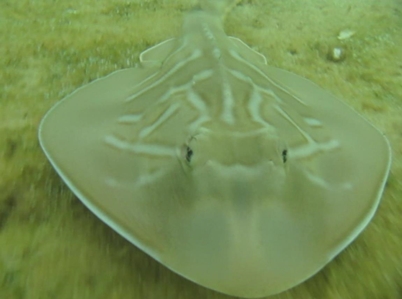General Description
Body flattened with an oval to diamond-shaped disc; snout short, broadly triangular; a row of large thorn-like denticles along middle of disc to first dorsal fin; tail long, broad with two dorsal fins of similar size, upper tail lobe well-developed, lower lobe short. Upper surface yellowish to brown with dark-edged greyish bands radiating from eyes and on either sides of middle of back; underside pale. To 1.5 m.
Biology
This species is common in coastal waters and is often seen foraging over sand flats and seagrass beds feeding on fishes and invertebrates. Females give birth to live young after a 12 month gestation period. They are taken as bycatch in commercial trawls and sold in small quantities.
Habitat
Coastal waters including over sand flats and seagrass beds, in depths to 205 m.
Soft substrates
Seagrass meadows
Distribution guide
Southern Australia.
Species Group
Sharks and rays › Stingrays, stingarees and allies
Depth
Shallow (1-30 m)
Deep ( > 30 m)
Water Column
Max Size
1.5 m
Diet
Carnivore
Harmful
Not usually considered dangerous to humans.
Commercial Species
No
Global Dispersal
Native to Australia
Conservation Status
- DSE Advisory List : Not listed
- EPBC Act 1999 : Not listed
- IUCN Red List : Not listed










